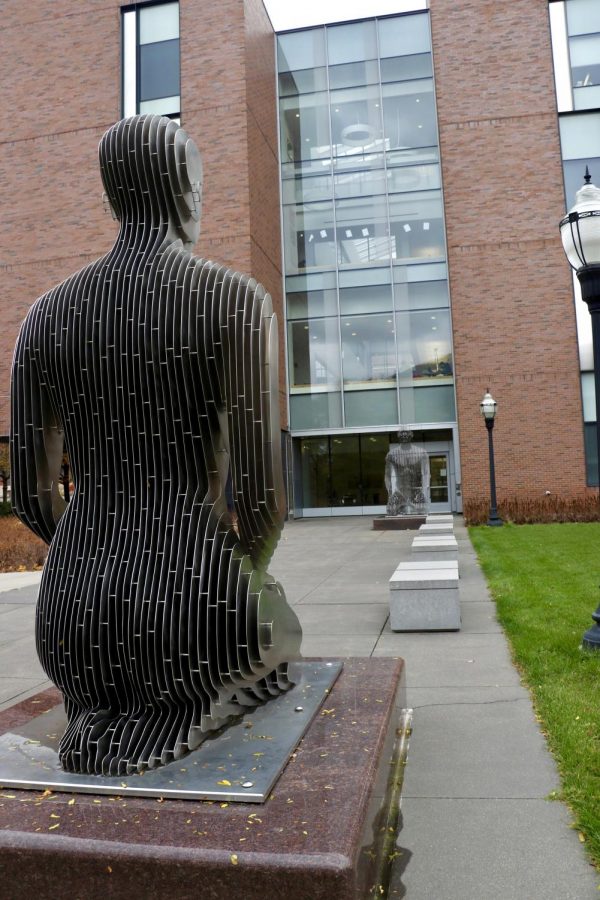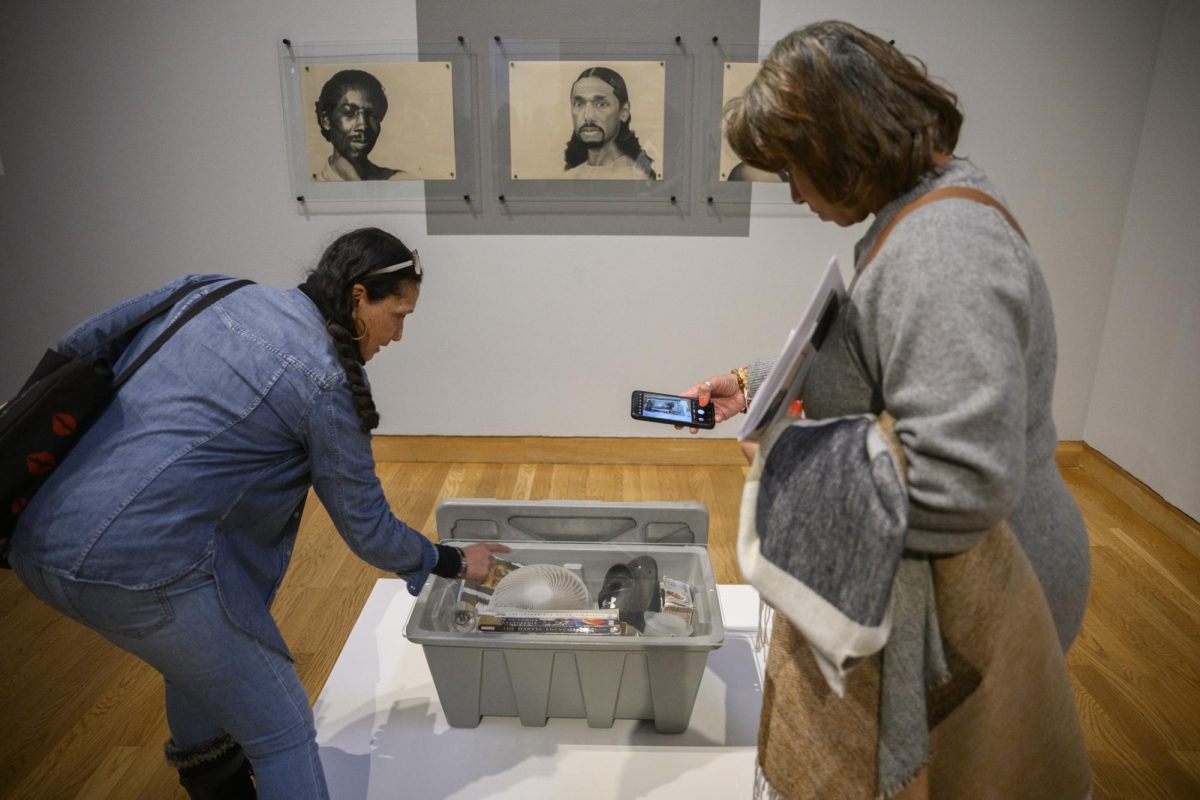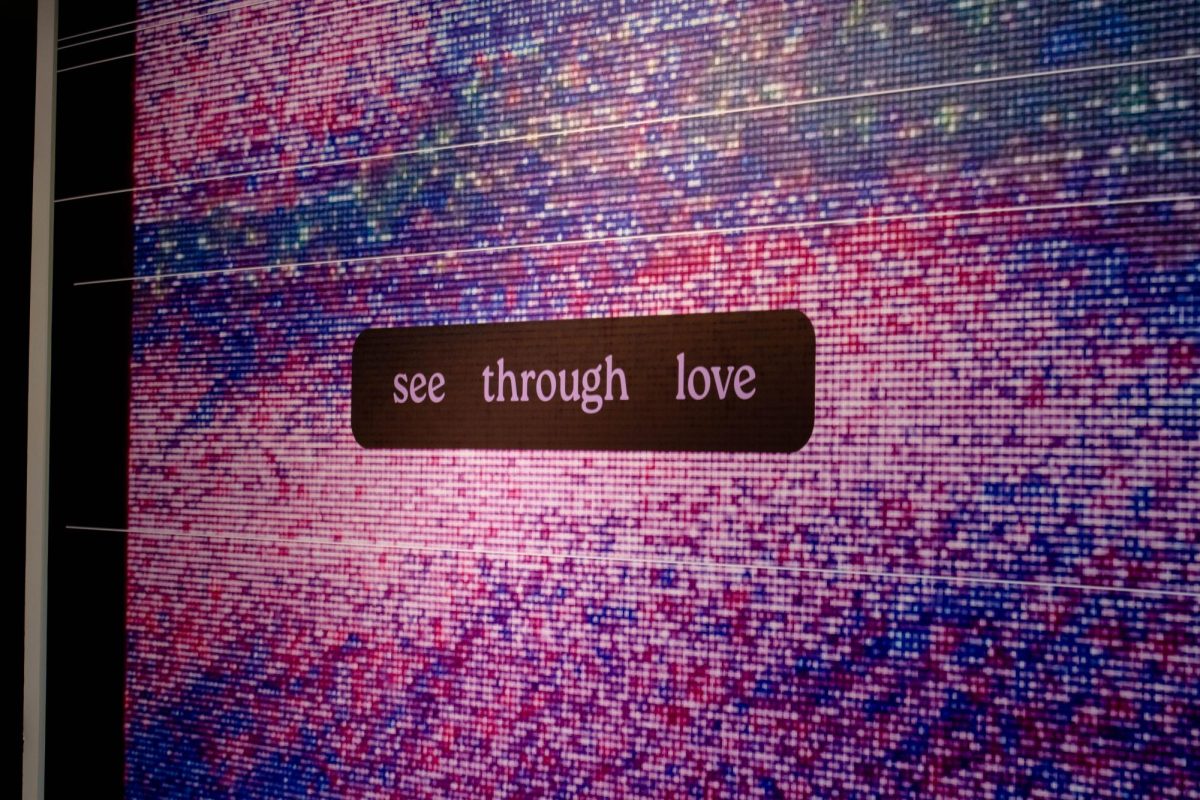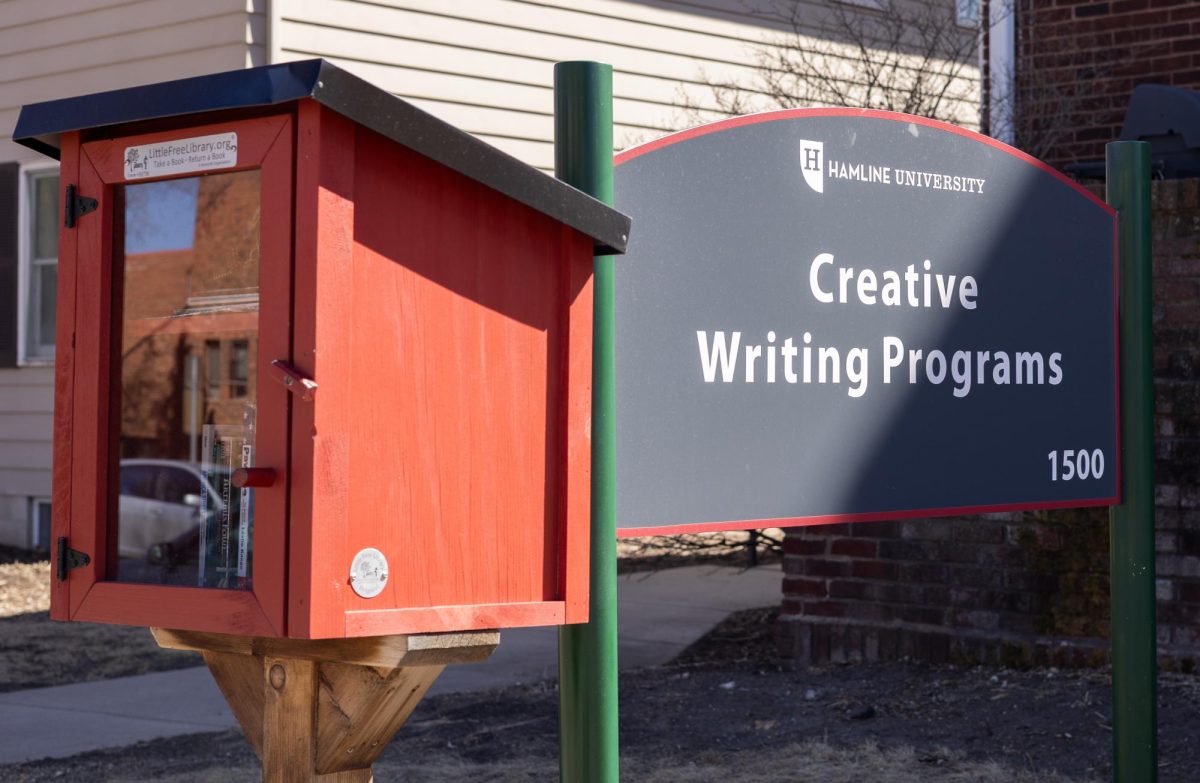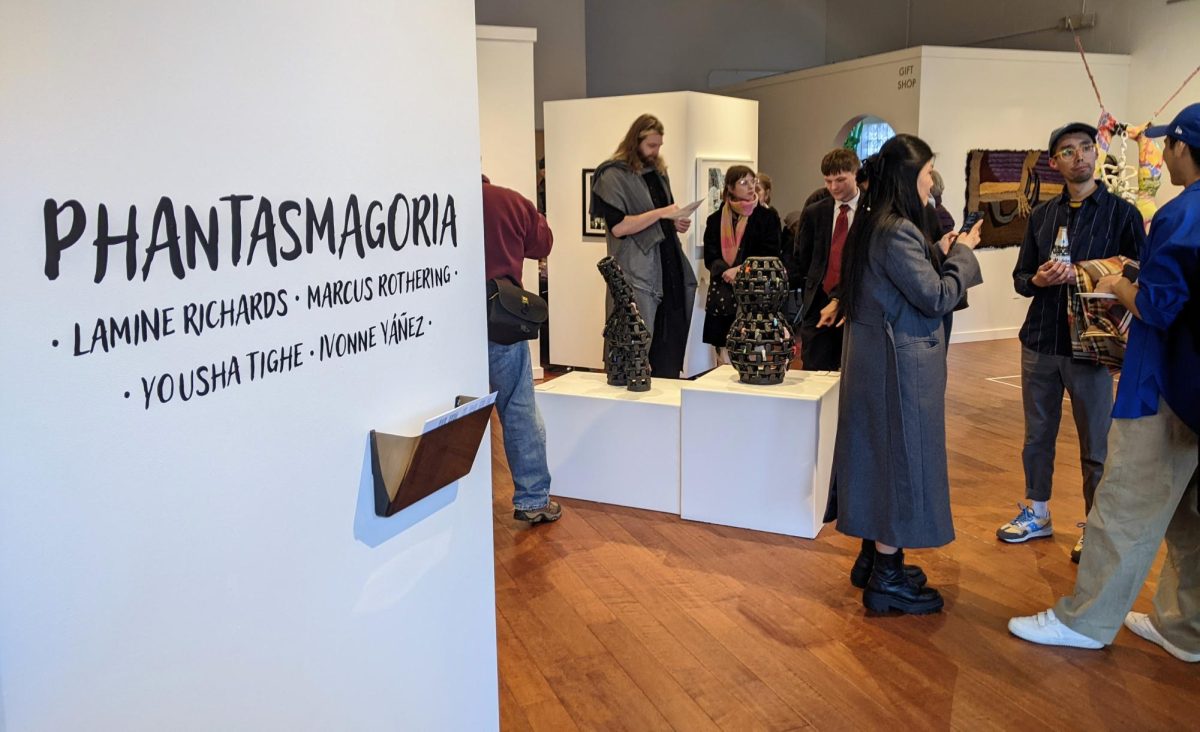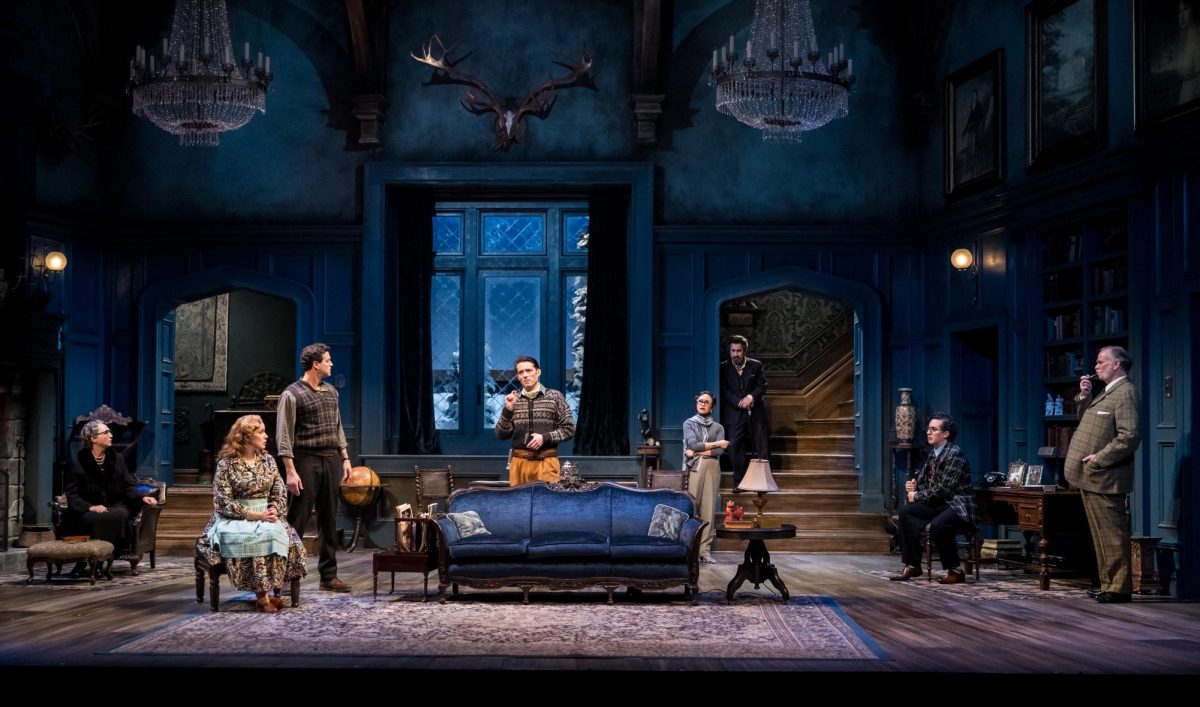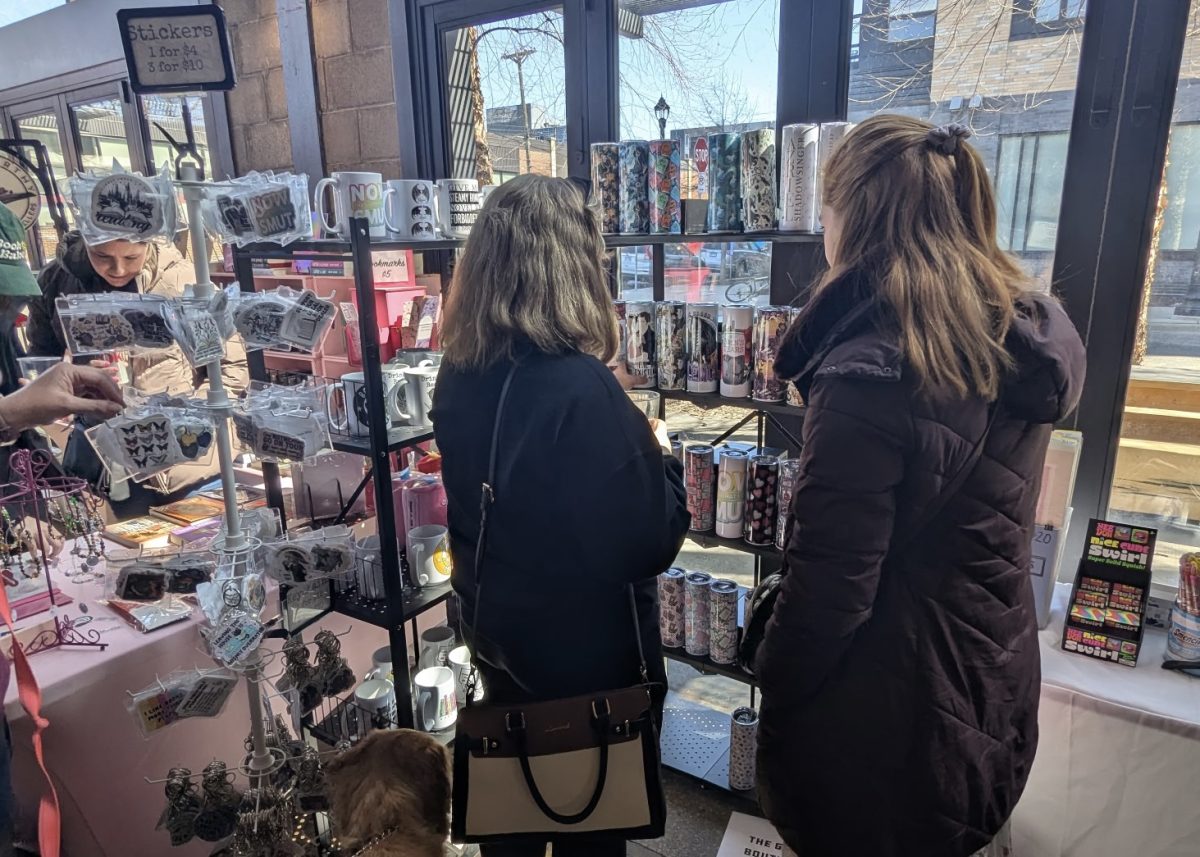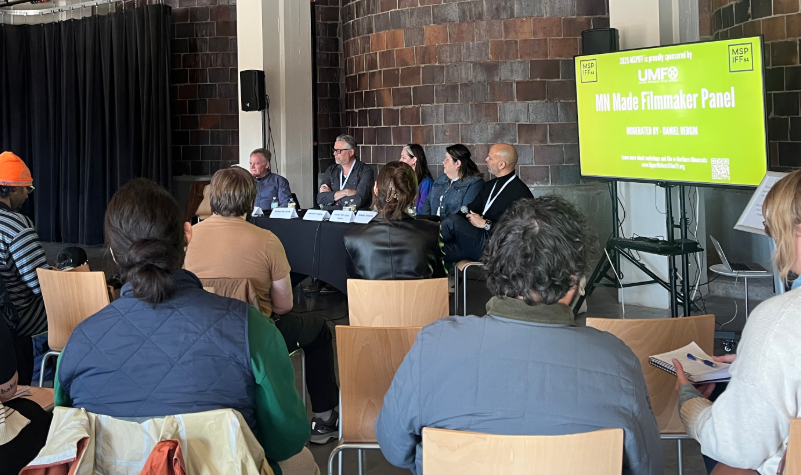“Spannungsfeld” leaves an impression on many from the moment they first visit the Twin Cities campus. From the peripheral, one can see “Spannungsfeld” is clearly two figures made of stainless steel: one male and one female, facing each other. That simplicity is upended when viewed from directly behind, one can see straight through the stainless steel slices, a visual trick that plays in its fullest effect when one walks a 360 around the eight foot structure.
Despite its ubiquity in the University of Minnesota’s popular imagination, few on campus know the artwork’s hard-to-pronounce name, let alone the storied background of its Portland-based German artist, Julian Voss-Andreae.
Voss-Andreae, an internationally renowned Hamburg-born sculptor with a prestigious graduate degree in quantum physics, says he was tapped by the University’s public art curator, Craig Amundsen, to create an outdoor piece for University’s Physics and Nanotechnology Building after they met at a 2010 public art conference in London. As a physics-expert-turned-artist, Amundsen said he felt Voss-Andreae was a perfect fit for the project.
In German, “Spannungsfeld” means “tension field,” a term that originated in physics but is used in contemporary German to describe a metaphorical tension between polar opposites — like when you notice a Vikings fan and Packers fan arguing at a sports bar. The sculpture’s two figures represent this opposition but also an interconnectedness. By placing the steel slices on the same plane, the decision to make one figure male and the other female conveys a sense that one cannot exist without the other. Discussions of the oneness within dual opposites are common in both quantum physics and in many Eastern philosophies (think yin yang). Voss-Andreae draws from all of these thoughts as inspiration for his art.
“The faculty within the physics department was very pleased with the representation as he conceived it,” Amundsen said of the sculpture’s complicated meaning.
In fact, Amundsen said that he considers “Spannungsfeld” to be one of the most popular pieces in the University’s public art collection.
Voss-Andreae, who says he has not visited “Spannungsfeld” since its installation in 2014, was completely unaware of its local fame.
“I had no idea, I don’t get this kind of feedback,” Voss-Andreae said.
A scroll through Voss-Andreae’s Instagram reveals that this style of sculpture is his specialty and he is still turning out consistent work from his Portland studio. Currently, Voss-Andreae has been especially pushing himself to learn more about Eastern traditions to help supplement his Western science background, all for the sake of the art.
“I want them all to pronounce the word ‘Spannungsfeld’ perfectly,” Voss-Andreae said with a smile before continuing, “I want them to take away what they want to take away and if they want to get into the physics behind this, that’s great.”


